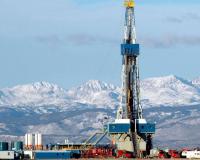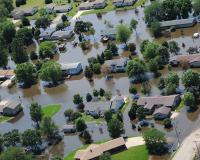
Vibrant Environment
All | Biodiversity | Climate Change and Sustainability | Environmental Justice | Governance and Rule of Law | Land Use and Natural Resources | Oceans and Coasts | Pollution Control

What is the most valuable crop in California? It isn’t almonds ($5.3 billion), strawberries ($1.8 billion), or grapes ($1.3 billion), but cannabis, now worth around $17 billion annually. In fact, cannabis is presently the fastest growing industry in the United States with over 30 percent per year compound growth according to preliminary 2016 revenues reported in Colorado by the Marijuana Enforcement Division.

Even after lawmakers leave the capital for their August recess, there’s still a summer buzz in the air at ELI’s offices in Washington, D.C. From June through August, nearly every open desk is filled by a volunteer, intern, or law clerk working to further ELI’s mission and support its many programs around the world. This summer, I was fortunate enough to spend a brief three months in the nation’s capital as one of those students. My fellow interns and law clerks hailed from as far as U.C.

When a public company describes the impact of a proposed regulation, it must consider two audiences: regulators and financial markets. It would like to sway the regulator by emphasizing how stringent regulations could cause job losses or reduce investment. But it may wish to convince investors that the company will thrive in the face of any plausible regulatory outcome.

In response to reputational pressures and economic incentives, many companies tailor their product design, purchasing decisions, and management systems to reflect environmental considerations. Because consumers usually can’t observe these benefits in a company’s products or services, firms increasingly turn to environmental certification schemes or “ecolabels” to highlight their achievements.

ELI’s Technology, Innovation and the Environment project targets the market for serious games with our new game, Cards Against Calamity, a multiplayer board game that explores coastal communities’ resilience to crises. Cards Against Calamity was developed in collaboration with 1st Playable Productions and funded by the National Oceanic and Atmospheric Administration (NOAA).

Bluefin tuna, the general group name of several species that belong to subgenus of true tunas Thunnus (Thunnus), are the largest of all tunas and have a natural lifespan of over 50 years. Reaching over two meters in length and weighing 200 kilograms as adults, the species is at the top of the marine food chain. But for great white sharks, bluefin tunas have few natural enemies. Sadly, in the last few decades, a new enemy has appeared: humans.

On July 3, 2017, the D.C. Circuit ruled against the Trump Administration in Clean Air Council v. Pruitt, holding that it could not delay an EPA rule limiting methane pollution from oil and gas drilling. The 2016 rule was part of the Obama Administration’s regulatory strategy to reduce emissions of methane, a greenhouse gas roughly 25 times more powerful than carbon dioxide.

Floodplain acquisitions offer many benefits. As Dr. Rebecca Kihslinger explained in a previous post, buyout properties can be transformed from flood-prone subdivisions and vulnerable riverfront businesses into community gardens, biking trails, and natural habitats. And by acquiring flood-prone properties, local governments can spare families and business owners the heartbreak that accompanies seeing one’s home or livelihood submerged.

Despite President Trump’s decision to withdraw the United States from the Paris Agreement, U.S. cities and states, as well as nations around the world, remain committed to addressing climate change, in many cases stepping up their efforts. But even had Trump decided otherwise, the Paris Agreement would not do enough to reduce the risk of catastrophic climate change.

In a landmark decision issued June 20, the Pennsylvania Supreme Court confirmed that Pennsylvania’s Environmental Rights Amendment, adopted in 1971, creates a “public trust” in Commonwealth resources as the “common property of all the people including generations yet to come.”